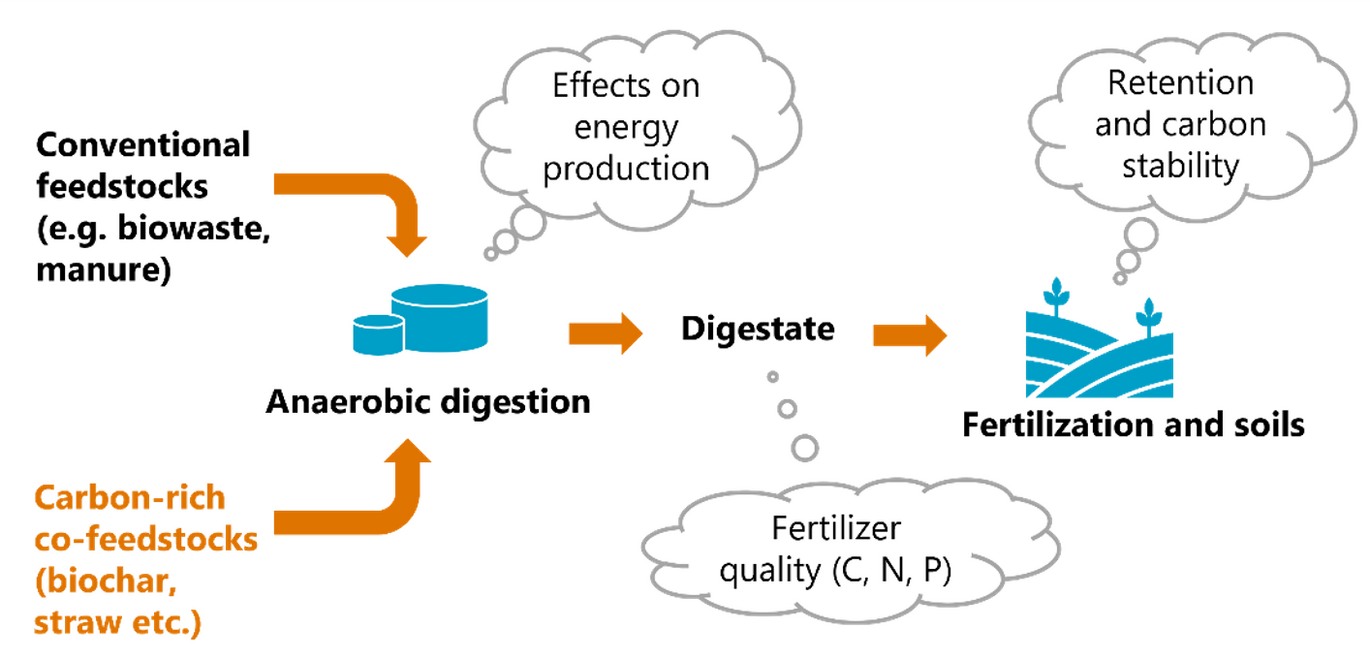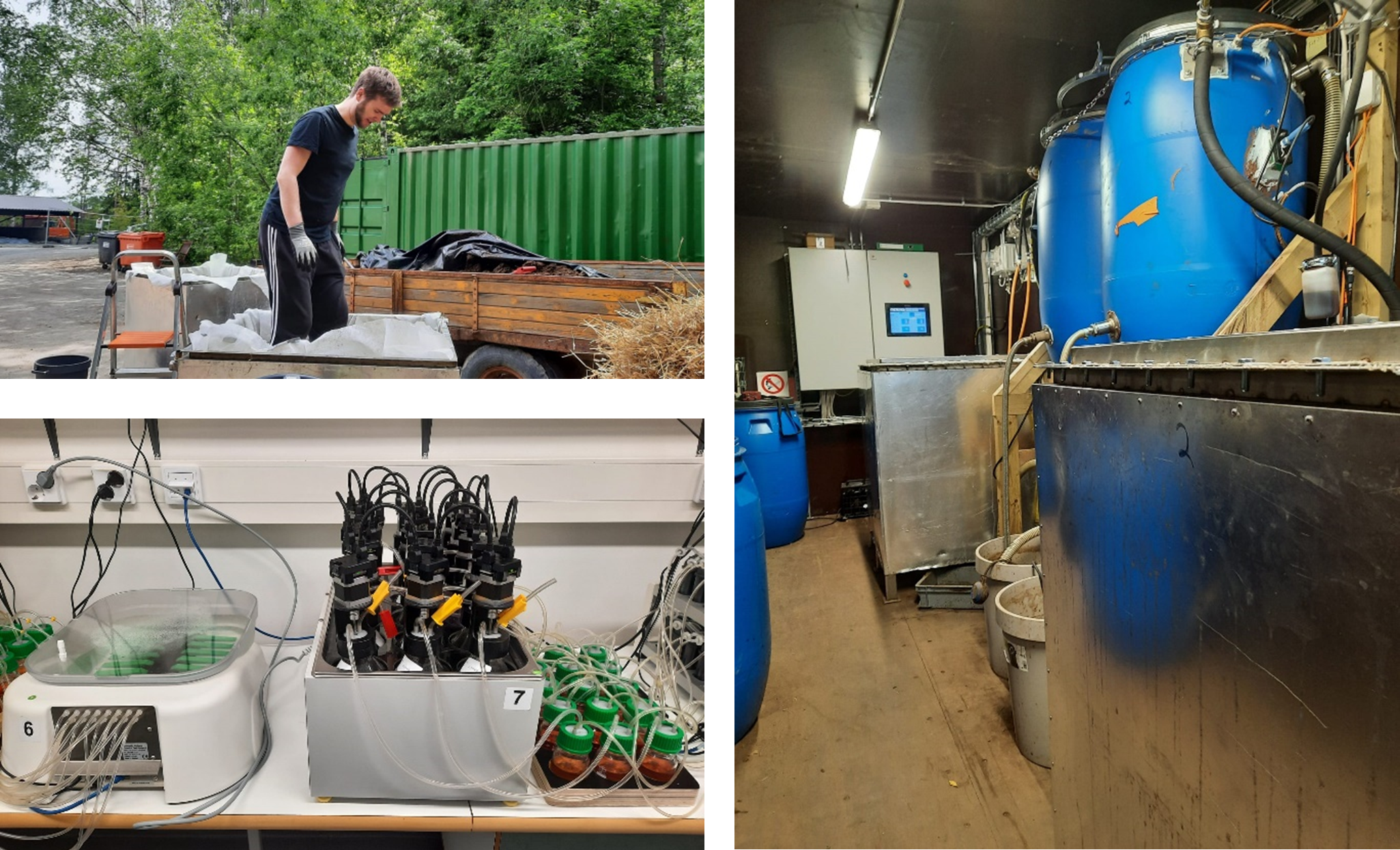EOM4SOIL aims at proposing best management practices of external organic matter in soils
The EOM4SOIL project (External organic matters for climate mitigation and soil health) aims at proposing best management practices of external organic matter (EOM) pre-processing and application on soil to contribute to climate change mitigation and improve soil health. The EJP SOIL funded project started in November 2021.


The team at Natural Resources Institute Finland (Luke) is looking for potential biomass processing technologies to contribute to carbon (C) sequestration in soils. Of interest is anaerobic digestion (AD) that has multiple benefits in circular bioeconomy. It produces renewable energy from different waste and side-streams preserving nutrients and organic matter, which can be recirculated back to food production (Fig. 1).
Figure 1. AD has multiple benefits in circular bioeconomy. In EOM4SOIL-project Luke’s research team studies the addition of carbon-rich co-feedstocks into the AD process and its potential to increase C sequestration in soils.
Digestate contains macro- and micronutrients essential for plant growth, and organic matter, that has crucial role in maintaining soil structure and productivity. Organic matter in digestate contributes to C sequestration because the proportion of recalcitrant and complex organic compounds increases during the AD process. This influences the retention of C in soils compared to untreated material when digestates are applied on fields.
By boosting AD with refractory organic matter containing co-feedstocks could further increase C sequestration in soils. Application of biochar to soils is known to have multiple benefits and biochar has also been reported to enhance methene production in anaerobic digesters. Especially for wastewater sector, thermochemical processes, such as pyrolysis, provide potential sludge valorization method. Also, other sources of recalcitrant C, such as lignocellulosic side-streams from agriculture and municipalities can be utilized. In the EOM4SOIL project biomasses such as straw and garden wastes, or biochars from pyrolysis are studied as co-feedstocks in anaerobic biowaste or cow manure-based digesters (Fig. 2).
During the project, the researchers performed biochemical methane potential tests to screen optimal feedstock mixtures and scaled up of biogas experiments to evaluate process performance and digestate quality.
The researchers have utilized Luke’s experimental facility Biopaja to study anaerobic digestion in different scales.
So far, the first results show that carbon-rich co-feedstocks could comprise up to 14% of the total mass of feedstock mixtures without compromising methane production and fertilizer value of the digestate. The project continues with analyses and modelling on digestate long-term (up to 100 years) C stability and its potential for soil C sequestration when applied on fields.